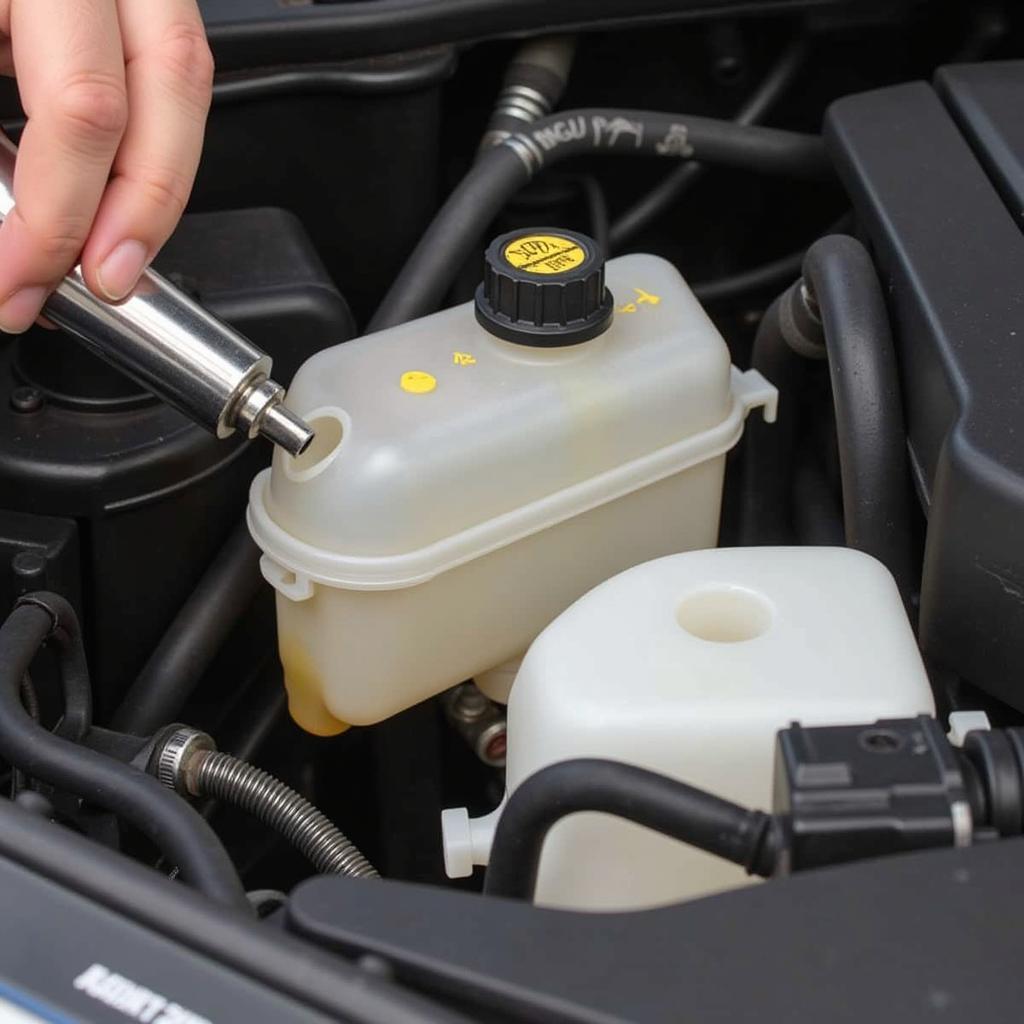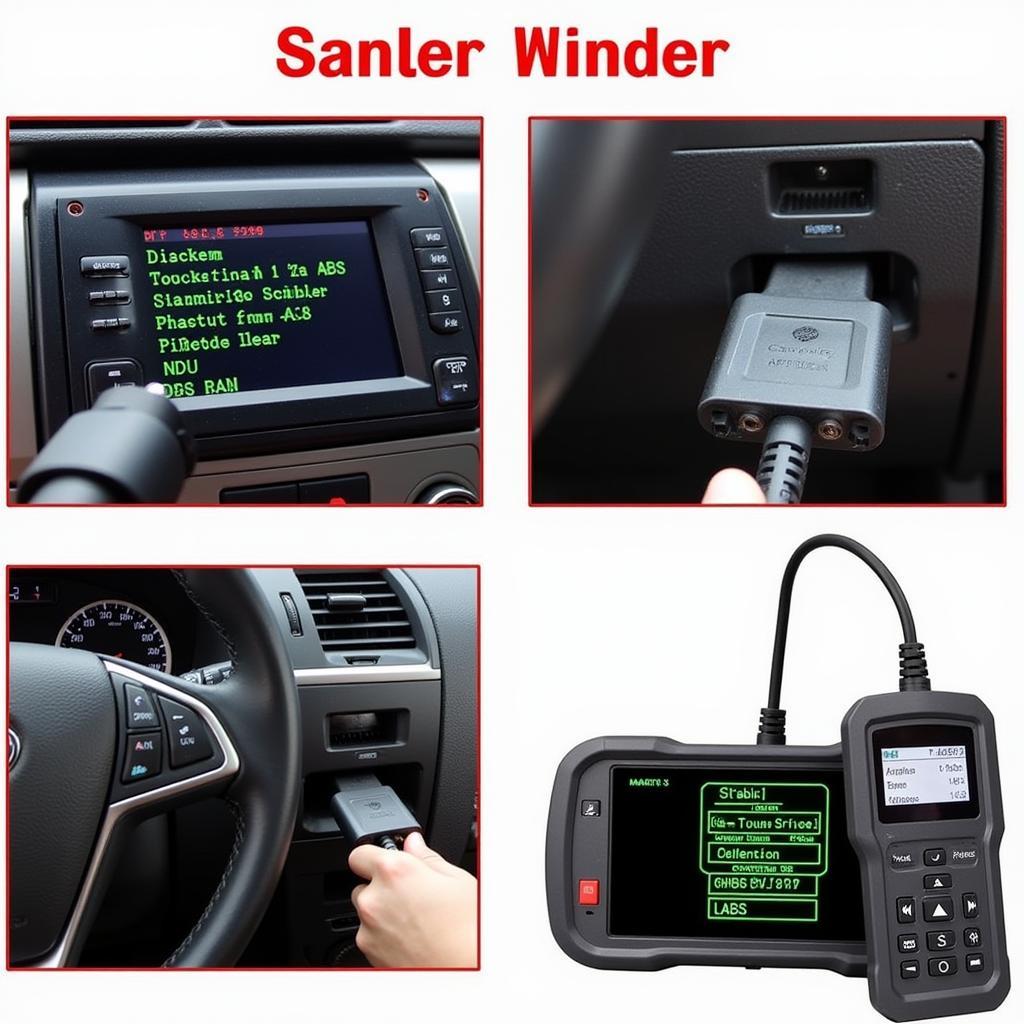Applying your brakes and suddenly seeing the Stabilitrak and ABS warning lights flash on can be alarming. This issue, while concerning, can often be resolved without a costly trip to the mechanic. This comprehensive guide explores the common causes behind the “applying brake cause stabilitrak ABS warning” problem and provides effective troubleshooting steps, empowering you to diagnose and potentially fix the issue yourself.
Understanding the Stabilitrak and ABS Systems
Before diving into troubleshooting, it’s crucial to understand how these systems work. The Anti-lock Braking System (ABS) prevents wheel lockup during hard braking, allowing you to maintain steering control. Stabilitrak, also known as Electronic Stability Control (ESC), takes it a step further by monitoring your vehicle’s stability and applying brakes or reducing engine power to prevent skidding or loss of control. These systems work in tandem to ensure a safe driving experience. When you apply your brakes and see both warning lights activate, it suggests a potential problem affecting both systems.
Common Causes of the “Applying Brake Cause Stabilitrak ABS Warning”
Several factors can trigger the Stabilitrak and ABS warning lights when applying the brakes. These include:
- Low Brake Fluid: Insufficient brake fluid levels can compromise the hydraulic pressure needed for proper ABS and Stabilitrak function.
- Faulty Wheel Speed Sensors: These sensors monitor the rotational speed of each wheel, providing crucial data to the ABS and Stabilitrak systems. A malfunctioning sensor can send incorrect signals, triggering the warning lights.
- Damaged ABS Tone Ring: The ABS tone ring, located on the wheel hub, works with the wheel speed sensor. Damage to this ring can disrupt signal transmission.
- Worn Brake Pads and Rotors: Worn brake components can cause uneven braking, potentially affecting ABS and Stabilitrak performance.
- Wiring Issues: Corroded or damaged wiring in the ABS and Stabilitrak systems can disrupt communication and trigger warning lights.
- ABS Module Problems: In some cases, the ABS module itself can malfunction, requiring replacement or repair.
Troubleshooting Steps for “Applying Brake Cause Stabilitrak ABS Warning”
If you’re experiencing this issue, here’s a step-by-step guide to help you troubleshoot:
- Check Brake Fluid Level: Locate the brake fluid reservoir and check the fluid level. If it’s low, top it off with the correct brake fluid type specified in your owner’s manual.
- Inspect Brake Pads and Rotors: Visually inspect your brake pads and rotors for excessive wear. If they are worn, replace them as soon as possible.
- Scan for Diagnostic Trouble Codes (DTCs): Use an OBD-II scanner to retrieve any stored diagnostic trouble codes. These codes can pinpoint the specific area causing the problem, such as a faulty wheel speed sensor.
- Check Wheel Speed Sensors: If the DTCs indicate a wheel speed sensor problem, inspect the sensors and wiring for damage or corrosion. Clean or replace any faulty components.
- Inspect ABS Tone Ring: Carefully examine the ABS tone ring for any cracks, damage, or debris. Replace the tone ring if necessary.
- Check Wiring and Connectors: Inspect the wiring and connectors in the ABS and Stabilitrak systems for any signs of damage, corrosion, or loose connections. Repair or replace any faulty wiring.
 Checking Brake Fluid Level
Checking Brake Fluid Level
“Regular maintenance, including brake inspections and fluid checks, can prevent many ABS and Stabilitrak issues.” – John Smith, Automotive Engineer
When to Seek Professional Help
If you’ve followed the troubleshooting steps and the warning lights persist, it’s time to consult a qualified automotive technician specializing in ABS and Stabilitrak systems. They have the expertise and specialized equipment to diagnose and repair more complex issues, potentially including ABS module replacement or advanced diagnostic procedures.
 Using an OBD2 Scanner for Diagnostics
Using an OBD2 Scanner for Diagnostics
“Don’t ignore persistent warning lights. Addressing the issue promptly can prevent further damage and ensure your safety on the road.” – Maria Garcia, Certified Automotive Technician
Conclusion
Applying your brakes and seeing the Stabilitrak and ABS warning lights is a serious concern. By understanding the potential causes and following the troubleshooting steps outlined in this guide, you can often identify and address the problem. However, if the issue persists, seeking professional assistance from a qualified technician is crucial for ensuring the proper functioning of these vital safety systems and preventing further complications. Remember, regular maintenance and timely repairs are key to a safe and reliable driving experience.
FAQ
-
What does it mean when both the Stabilitrak and ABS lights come on? It typically indicates a problem affecting both systems, such as low brake fluid, faulty wheel speed sensors, or issues with the ABS module.
-
Can I drive with the Stabilitrak and ABS lights on? While you may still be able to brake, these safety systems may be compromised. It’s crucial to diagnose and address the issue as soon as possible.
-
How much does it cost to fix the “applying brake cause stabilitrak ABS warning” problem? The cost varies depending on the underlying cause. Simple fixes like topping off brake fluid are inexpensive, while replacing an ABS module can be more costly.
-
How can I prevent this issue from happening again? Regular brake inspections, including checking fluid levels and inspecting brake components, can help prevent many ABS and Stabilitrak problems.
-
What is the difference between ABS and Stabilitrak? ABS prevents wheel lockup during hard braking, while Stabilitrak helps maintain vehicle stability by applying brakes or reducing engine power to prevent skidding.
-
Is it safe to drive with low brake fluid? Driving with low brake fluid is extremely dangerous and can lead to brake failure.
-
Can a faulty wheel speed sensor cause the Stabilitrak and ABS lights to come on? Yes, a malfunctioning wheel speed sensor can disrupt the signals sent to the ABS and Stabilitrak systems, triggering the warning lights.
